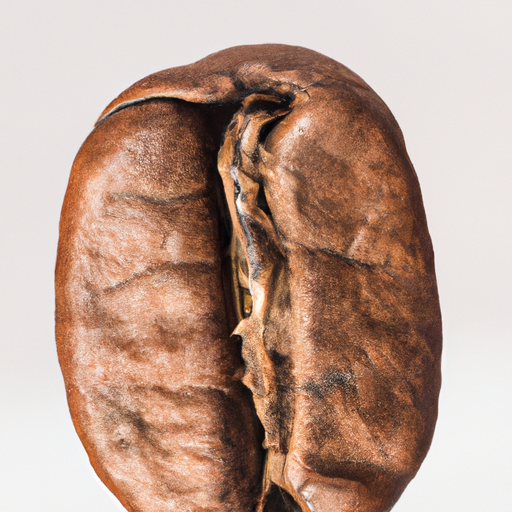Have you ever wondered about the weight of a coffee bean? It may seem like a small and insignificant thing to consider, but when you think about how many coffee beans are used to make a single cup of coffee, it starts to become a bit more interesting. The weight of a coffee bean can vary depending on factors such as the type of bean and its roast level. In this article, we’ll explore the weight of a coffee bean and why it matters in the world of coffee brewing. So grab your favorite cup of joe and let’s dive into the fascinating world of coffee bean weights.
What is the Weight of a Coffee Bean?

Overview
Have you ever wondered about the weight of a coffee bean? Coffee beans are the seeds of the coffee plant and they come in a variety of sizes and weights depending on several factors. In this article, we will explore the factors that affect coffee bean weight, the measurement units used in determining this weight, the average weight of a coffee bean, and the variations that exist within different types of coffee beans. Additionally, we will discuss how coffee roasting, packaging, and storage can impact the weight of a coffee bean. So, if you’re a coffee lover curious about the nitty-gritty details of your favorite beverage, keep reading!
Factors Affecting Coffee Bean Weight
Several factors influence the weight of a coffee bean. These include the coffee plant variety, altitude at which the plant grows, climate, soil conditions, and the coffee cherry ripeness when harvested. Different coffee plant varieties, such as Arabica and Robusta, have varying bean sizes and weights. Altitude and climate impact the growth conditions of the coffee plant, influencing the beans’ size and weight. Coffee plants grown at higher altitudes typically produce denser and smaller beans compared to those grown at lower altitudes. Soil conditions, such as nutrient composition, also play a role in the weight of coffee beans. Furthermore, the level of ripeness of the coffee cherry at the time of harvesting affects the size and weight of the beans.
Measurement Units
The weight of coffee beans is typically measured in metric units, with grams being the most commonly used unit of measurement. It allows for precise and consistent measurements. Coffee professionals and enthusiasts often use a precise scale to weigh the beans in grams. This measurement is crucial in ensuring the accuracy of coffee brewing ratios and the consistency of flavor profiles. However, in some cases, ounces may be used to measure coffee bean weight, particularly in countries where the Imperial system is still in use.
Average Weight of a Coffee Bean
The average weight of a coffee bean varies based on the coffee plant variety. Arabica coffee beans, which are the most commonly consumed type, generally weigh between 0.14 to 0.18 grams per bean. On the other hand, Robusta coffee beans, known for their higher caffeine content, tend to be slightly smaller and lighter, weighing between 0.1 to 0.12 grams per bean. These average weights may vary within different regions and growing conditions, but they provide a baseline understanding of what to expect when considering the weight of coffee beans.

Variations in Weight
Coffee beans, like any natural product, exhibit natural variations in weight. Even within a single batch of coffee beans, variations in size and weight can be observed. These variations are influenced by factors such as the distribution of nutrients in the soil, the amount of rainfall received, and the overall health of the coffee plant. Additionally, variations can also occur due to the processing methods used after the coffee cherries are harvested. As a result, it is common to find coffee beans that deviate slightly from the average weight, both lighter and heavier.
Arabica vs. Robusta
The weight difference between Arabica and Robusta coffee beans can be attributed to their genetic makeup and growing conditions. Arabica coffee beans, being slightly larger and heavier, are favored for their complex flavor profiles, acidity, and aroma. Robusta coffee beans, although smaller and lighter, are known for their higher caffeine content and more bitter taste. It is important to note that while the weight of the coffee beans may differ, both Arabica and Robusta beans can produce delicious and high-quality coffee when roasted and brewed properly.

Impact of Coffee Roasting
Coffee roasting plays a significant role in the weight of coffee beans. During the roasting process, coffee beans lose moisture, causing a reduction in weight. On average, coffee beans can lose around 15-20% of their weight during roasting. This weight loss occurs due to the evaporation of water and the breakdown of certain compounds within the beans. It is essential for coffee roasters to carefully monitor the weight loss during roasting to ensure consistency in their roasting profiles and to develop the desired flavors and aromas.
Green Coffee Bean Weight Loss
Before coffee beans are roasted, they are known as green coffee beans. Green coffee beans also undergo weight loss during transportation and storage. This weight loss is primarily due to moisture evaporation. When green coffee beans lose moisture, they become lighter, resulting in a decrease in weight. The extent of weight loss varies depending on the storage conditions and duration. Proper packaging and storage techniques are crucial in minimizing weight loss and maintaining the integrity of the coffee beans until they are ready to be roasted.
Packaging and Storage Impact
The way coffee beans are packaged and stored can also have an impact on their weight. Exposure to air, humidity, and temperature fluctuations can lead to further moisture loss and weight reduction. Coffee beans are often packaged in airtight bags with one-way valves to release the gas emitted by the coffee beans without letting air in. This packaging method helps to maintain the freshness and prevent excessive moisture loss. Additionally, proper storage in cool and dry conditions is necessary to preserve the integrity of the coffee beans and avoid unnecessary weight fluctuations.
Conclusion
In conclusion, the weight of a coffee bean is influenced by several factors, including the coffee plant variety, altitude, climate, soil conditions, and the level of ripeness when harvested. Arabica and Robusta coffee beans have different average weights, with Arabica beans being slightly larger and heavier. Coffee roasting and green coffee bean storage also contribute to weight loss, primarily through the evaporation of moisture. Proper packaging and storage techniques are important to minimize weight fluctuations and ensure the freshness and quality of the coffee beans. Next time you enjoy your cup of coffee, remember the journey the little coffee beans have taken to bring you that delightful aroma and flavor. Cheers to the wonderful world of coffee!




